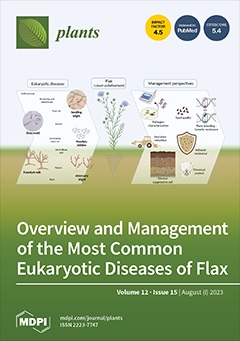Ver ítem
- xmlui.general.dspace_homeCentros e Institutos de InvestigaciónCICVyA. Centro de Investigación en Ciencias Veterinarias y AgronómicasInstituto de BiotecnologíaArtículos científicosxmlui.ArtifactBrowser.ItemViewer.trail
- Inicio
- Centros e Institutos de Investigación
- CICVyA. Centro de Investigación en Ciencias Veterinarias y Agronómicas
- Instituto de Biotecnología
- Artículos científicos
- Ver ítem
Co-expression networks in sunflower : harnessing the power of multi-study transcriptomic public data to identify and categorize candidate genes for fungal resistance
Resumen
Fungal plant diseases are a major threat to food security worldwide. Current efforts to identify and list loci involved in different biological processes are more complicated than originally thought, even when complete genome assemblies are available. Despite numerous experimental and computational efforts to characterize gene functions in plants, about ~40% of protein-coding genes in the model plant Arabidopsis thaliana L. are still not categorized in
[ver mas...]
Fungal plant diseases are a major threat to food security worldwide. Current efforts to identify and list loci involved in different biological processes are more complicated than originally thought, even when complete genome assemblies are available. Despite numerous experimental and computational efforts to characterize gene functions in plants, about ~40% of protein-coding genes in the model plant Arabidopsis thaliana L. are still not categorized in the Gene Ontology (GO) Biological Process (BP) annotation. In non-model organisms, such as sunflower (Helianthus annuus L.), the number of BP term annotations is far fewer, ~22%. In the current study, we performed gene co-expression network analysis using eight terabytes of public transcriptome datasets and expression-based functional prediction to categorize and identify loci involved in the response to fungal pathogens. We were able to construct a reference gene network of healthy green tissue (GreenGCN) and a gene network of healthy and stressed root tissues (RootGCN). Both networks achieved robust, high-quality scores on the metrics of guilt-by-association and selective constraints versus gene connectivity. We were able to identify eight modules enriched in defense functions, of which two out of the three modules in the RootGCN were also conserved in the GreenGCN, suggesting similar defense-related expression patterns. We identified 16 WRKY genes involved in defense related functions and 65 previously uncharacterized loci now linked to defense response. In addition, we identified and classified 122 loci previously identified within QTLs or near candidate loci reported in GWAS studies of disease resistance in sunflower linked to defense response. All in all, we have implemented a valuable strategy to better describe genes within specific biological processes.
[Cerrar]

Fuente
Plants 12 (15) : 2767 (Agosto 2023)
Fecha
2023-08
Editorial
MDPI
ISSN
2223-7747
Formato
pdf
Tipo de documento
artículo
Palabras Claves
Derechos de acceso
Abierto
 Excepto donde se diga explicitamente, este item se publica bajo la siguiente descripción: Creative Commons Attribution-NonCommercial-ShareAlike 2.5 Unported (CC BY-NC-SA 2.5)
Excepto donde se diga explicitamente, este item se publica bajo la siguiente descripción: Creative Commons Attribution-NonCommercial-ShareAlike 2.5 Unported (CC BY-NC-SA 2.5)


